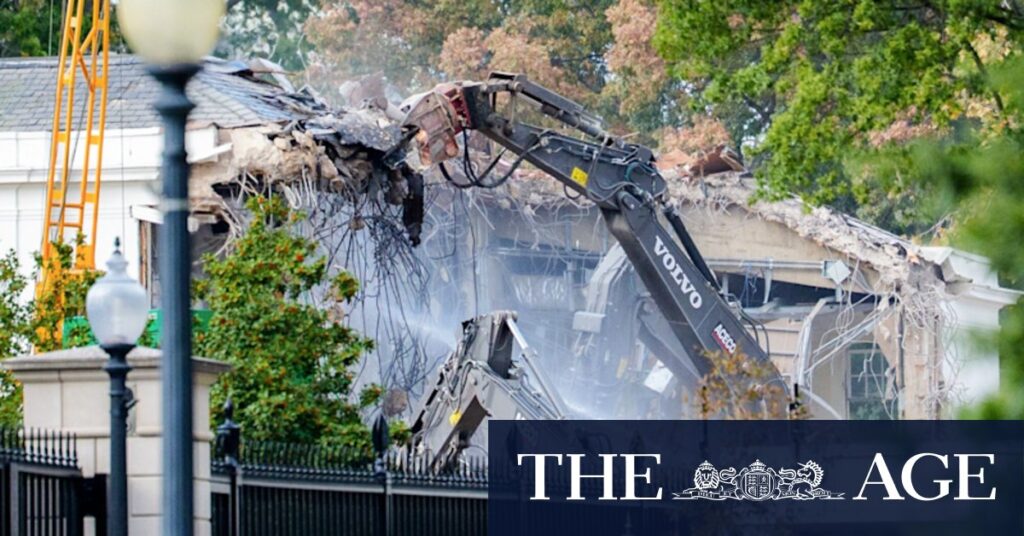
Washington: In a surprising move, the White House’s historic East Wing is undergoing near-total demolition to make room for a new $300 million-plus ballroom. This development comes despite President Donald Trump’s initial assurances that the project would not involve dismantling the existing structure. The demolition began on Monday, coinciding with a meeting between Prime Minister Anthony Albanese and Trump in the West Wing, just steps away from the construction site.
The East Wing, traditionally home to the First Lady’s offices and the White House social office, is being razed to accommodate a grand ballroom capable of hosting 1,000 guests. This rapid and unforeseen demolition has left historians and preservationists in shock, particularly after Trump’s July announcement that the project “won’t interfere with the current building.”
Controversy and Historical Significance
President Trump defended the decision, stating on Thursday that after consultations with architects, “really knocking it down” was deemed the best option. He claimed that “certain areas are being left,” downplaying the significance of the East Wing, which was last remodeled by Franklin D. Roosevelt during World War II.
“There was not much left from the original,” Trump remarked, noting the various changes the building had undergone over the decades. “It was never thought of as being much; it was a very small building.”
Despite Trump’s assertions, the demolition has raised concerns among preservationists. Stewart McLaurin, president of the nonpartisan White House Historical Association, emphasized that while the White House is constantly evolving, changes have often been contentious. The East Wing itself was constructed during wartime, adding to its historical significance.
Preservationists and Public Reaction
The National Trust for Historic Preservation expressed its concerns in a letter to the National Capital Planning Commission. Carol Quillen, the trust’s president and CEO, urged a halt to the demolition until the ballroom plans undergo public consultation, highlighting the potential impact on the White House’s classical design.
“While the National Trust acknowledges the utility of a larger meeting space at the White House, we are deeply concerned that the massing and height of the proposed new construction will overwhelm the White House itself,” Quillen wrote.
Tourists visiting the White House this week were drawn to the loud sounds of demolition, with some expressing dismay at the loss of a historic structure. Catheryn Koss, a visitor from California, voiced her disappointment, stating, “I think it’s a total waste of money and shows a complete lack of respect for historic buildings in our nation’s capital.”
Trump’s Vision and Transparency Claims
President Trump, a real estate developer known for his ambitious projects, has significantly altered the White House’s appearance since his return in January. He emphasized that the new ballroom, funded entirely by himself and private donors, would be “one of the great ballrooms anywhere in the world.”
Addressing accusations of a lack of transparency, Trump displayed images of the proposed ballroom in the Oval Office, asserting, “I think we’ve been more transparent than anybody’s ever been.”
“These pictures have been in newspapers, they’ve been all over the place,” Trump said, countering claims that the plans were kept under wraps.
Looking Ahead
The demolition of the East Wing and the construction of the new ballroom represent a significant transformation of the White House complex, sparking debate over the balance between modernization and preservation. As the project progresses, it remains to be seen how the new ballroom will integrate with the historic character of the White House and whether further public consultations will address the concerns raised by preservationists.
With construction underway, the focus now shifts to the implications of this change for future administrations and the ongoing dialogue between development and historical preservation in the nation’s capital.







